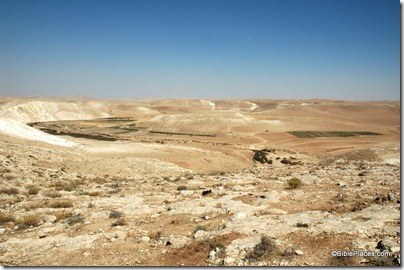Excavations at Khirbet al-Mudayna (Medeiniyeh) have been slowly and steadily peeling back the history of this large site on the southern side of the Medeba Plateau in Jordan. Some have suggested that the site be identified with Jahaz, the scene of the encounter between the Israelites under Moses and Sihon the Amorite (Num 21:23; Deut 2:32; cf. Judg 11:20; Isa 15:4; Jer 48:34). From Exchange Magazine:
For two decades, Laurier archaeology professor Michèle Daviau has led international teams of scholars and students abroad to uncover the hidden lives of people who existed thousands of years ago.
During her most recent excavation in Jordan, Daviau was astounded by the discovery of a limestone statue and several high-status objects that appear to have been imported from outside the region.
The objects were made from a variety of materials: three small black ware vessels, one with an incised design of triangles, two faience cosmetic containers, two faience bottles, one calcite cosmetic vessel, two alabaster vessels, one fine-grain basalt bowl and a steatite cosmetic mortar were discovered in an ancient house dating back to about 600 BC.
The objects were in the same room as a 40-centimetres statue of a male with red paint preserved on his left leg and his hands. Such finds have no parallels in Jordan although their source may be Egypt or Phoenicia, said Daviau.
“The alabaster and faience objects suggest influence from the two superpowers in the region, Egypt and Assyria, but the dynamics whereby these objects arrived at the site are a mystery,” she said. “They may reflect a period of about 30 or 40 years when Egypt controlled this area.”
The principal sites under excavation by Daviau in the Wadi ath-Thamad area are Khirbat al-Mudayna and the Roman fortress of Zuna. The former is a walled Iron Age town (1,000 to 600 BC) situated on a hill with the Nabataean/early-Roman period settlement (100 BC to 150 AD) at the hill’s base. More than 150 sites that date from the Lower Paleolithic to the Ottoman period have been located in the dig’s 10- by 11-kilometre survey area.

